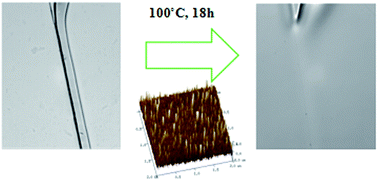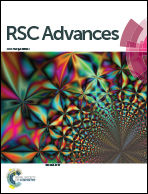Synthesis of self-healing waterborne polyurethanes containing sulphonate groups
Abstract
Polyurethanes can be modified to obtain an intrinsic self-healing property, which is the ability to self-recover from the damage of bulk materials, by changing the ways of increasing the density of hydrogen bonds or by inducing additional reversible crosslinks. An environment-friendly self-healing waterborne polyurethane (SHWPU) containing sulphonate groups was synthesized from isophorone diisocyanate, poly(tetramethylene glycol) and poly(1,4-butylene adipate glycol) and dispersed in water using the aliphatic diamine sulphonate as a hydrophilic chain-extender. The SHWPU coatings show a higher healing efficiency than the coatings without sulphonate group chains extended by ethylenediamine (EDA). With an increase in the soft contents, the healing efficiency increases, by virtue of which the polymer can completely recover itself at a temperature of 100 °C for 18 h. Moreover, significant phase separation of the continuous soft phase distributed with a spot-like hard phase is observed, which is due to the formation of ionic clusters.



 Please wait while we load your content...
Please wait while we load your content...